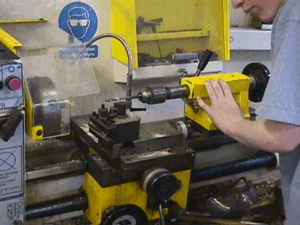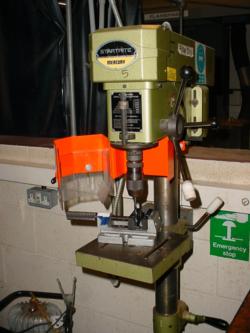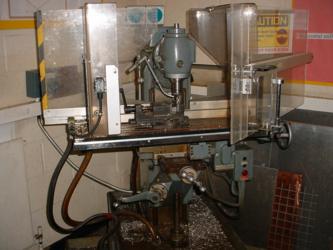

Metal Working Machines
| Centre lathe The work piece (billet) is held in a three jaw chuck. This is rotated by an electric motor through a gear box so that the speed can be changed. The tool is brought up against the billet by winding handles which control the slides. The first step is to face off which removes metal from the front face until it is smooth. Next parallel turning removes metal from the outside reducing the diameter of the billet. This is continued until the correct diameter is reached. A shoulder will now have been produced. |
 |
Pillar Drill Used to drill holes in a range of materials. The work piece should be clamped and held securely using a machine vice (usually). The guards should be in place and eye protection worn. The drill bit is held by the chuck which is either hand operated or tightened with a chuck key. |
 |
| The milling machine The milling machine is used to shape metal using a range of cutters. The machine in the photograph has been set up as a vertical mill. There are three handles to operate. One raises the bed increasing the cut depth. the second moves the table left to right and the third moves the table back and forth. Commonly used to cut slots and to reduce the size of the workpiece. It can also be used to improve the surface finish. This machine can be set up as a horizontal mill. |
 |
| The metal bandsaw Used to cut metal to length. The hardened steel blade must be cooled with a cutting fluid made from oil and water. This cooling fluid is used on most metalworking machines. |
|
The grinding wheel Used to grind and sharpen hardened steel tools. Should not be used on aluminium. Not to be used by students. Eye protection and guards must be used. |
|
The guillotine/notcher Used to cut sheet metals. The guillotine cuts without waste. The notcher cuts out a strip of metal 3 - 5mm wide. |